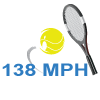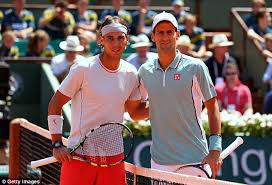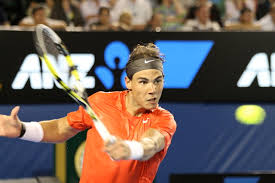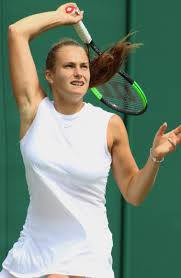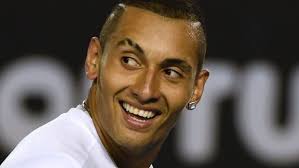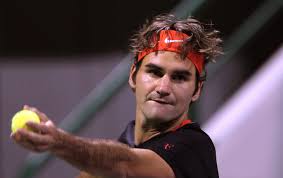US Open Tennis: About Nadal, Federer, Djokovic, Sabalenka, Kyrgios, Sharapova, et al.
We have had six days of tennis at the US Open now, and certain things, in the last six days, have stood out more than the others. Below is a laundry list of what was intriguing, funny, amusing, entertaining, and despicable over the last six days at the flushing meadows.
Could Rafa manage to stand even further back in rallies and while returning?
Rafael Nadal was hugging the lines-person, at the back, for the returns and planted, at least, 10 feet behind the baseline for the rallies against Khachanov. It was a little disconcerting to see his elbows touch the spectator stands for returns of the second serves at times.
How slow is the court playing? How can the best player in the world be forgiven for standing so far behind the baseline? That too in a slam. Shouldn’t there be laws instituted to prevent the public display of bad and injury-promoting tennis by the very best? Doesn’t he realize that there are seven to twelve years old who worship him and, therefore, emulate his injury prone style?
And, for god’s sake increase the speed of the damn hard and grass courts.
Why are Nadal’s matches so damn thrilling and entertaining?
That’s elementary Watson. Not only does Nadal never gives up on a point but also stands far behind the baseline to give ample time, enough moonballs, and surfeit hope to his opponents. The opponents get enough time to respond and therefore the rallies last forever, and long rallies usually build up for exciting finishes. The quality of the tennis may not be scintillating in a thirty-five shots rally towards the end of the fourth, it, however, carries enough drama and a few Houdini-like escapes from Nadal, which usually is enough for the stadium to erupt in a frenzy. Most fans, including yours truly here, look for a fight soaked in blood, sweat, and tears, and Nadal’s matches supply all those in quantum.
Is Aryna Sablenka the real deal, and a slam contender?
Her comprehensive 7-5, 6-1 beatdown of Petra Kvitova seemed to suggest nothing less. Aryna Sabalenka is a hard-hitting player and, in her third round, she was a tad better and consistent than Petra, who is also known to rip the covers off of a ball. The 6’0’’ and 20 years old Sabalenka is talented, like Kvitova, and will certainly have a chance against the error-prone games of the big hitters such as Kvitova, Pliskova, Keys, and others. She is yet to be tested, however, on the big stage by retrievers and moon-ballers of Simona Halep’s and Caroline Wozniacki’s consistency and caliber. Luckily, for Sabalenka, both punched out early, at the US Open, this year.
Can the chair umpire succeed, in taming Kayrgios, when professional coaches have failed quite miserably?
Apparently, Mohamed Lahany got through to the incorrigible Nick Kyrgios and made him play some real tennis to eke out a win from a set and 3-0 down. The sight of Lahany, the chair umpire, stretching the protocol to give Nick the pep-talk and explain how he was making the sport look crappy was quite an amusing sight, to say the least, and evoked comments from even the Maestro. Mohamed’s pep talk energized Nick to turn the tables and the match in his favor. Layhani, even after his unprecedented and historical breakthrough, however, was not selected to officiate the next one between Kyrgios and Federer.
The Maestro is still good.
Will the Maestro be able to maintain focus over five sets against Novak Djokovic, the best retriever and grinder of all times? Nick is a super talented and dangerous opponent for anyone, including, the great, Roger Federer, but Roger’s 75% is good enough to best anyone without the consistency, and retrieving and grinding skills of a Nadal or Djokovic.
What would Roger need to beat Novak or Rafa?
To overcome either Novak or Rafa, however, Roger must avoid those, ever so common, lapses in focus and intensity. Such walkabout phases are more common with aggressive players such as Federer than with grinders and retrievers who play with margins in their favor. It also doesn’t help to be three years past the retirement age.
Roger could not hold it together after a two-set and match point lead against Kevin Anderson at the Wimbledon. How will he manage a five sets duel against the laser-like focus and grinding abilities of Djokovic? Beating a rejuvenated and an inspired Djokovic will indeed be a tough task for this 37 years old.
Nadal and Djokovic play with margins in their favor?
Both Nadal and Djokovic are grinders and retrievers. Nadal, however, stands ten feet behind whereas, Djokovic stands quite close to the baseline. Nadal’s forehand, moreover, is a lethal weapon, whereas, Djokovic has a complete game but lacks a point ending WMD. Before going all crazy on us, Djokovic’s fans must understand that movement, speed, and the return are not considered weapons at 138mph. Even the backhand, which depends primarily on the non-dominant foot, is not considered a serious weapon, unless wielded by Wawrinka.
The explanation, pertaining to the breach of the laws associated with the space-time continuum and astral travel, is revealed in our post “Decoding the Big Three & Murray.”
Will the old order ever change to give way to the new?
Are we in a time-warp and stuck with Roger, Rafa, and Novak forever? Isn’t it time for a final bereft of the big three. Tennis is in a desperate need of new heroes. Will the 2018 US Open final bring those tidings of great joy? With Zverev, Tsitsipas, and Shapovalov out of this slam, I sure won’t bet on it.
The match between Kenin and Pliskova was, for all intents and purposes, a plug for the dope-tainted Sharapova.
Was I the only one disgusted with the commentators raving about Sharapova’s slam win as a teenager? At some point in the second, with Kenin up a break, the commentators began their fanatical praise of Sharapova, which lasted over a couple of games and included a heartfelt appreciation of her grit in overcoming a debilitating shoulder injury to win slams. Am I the only one who remembers that she was on performance enhancing drugs, PEDs, for over ten years?
The facts about Meldonium.
The facts of the matter, as quoted from The Guardian(https://www.theguardian.com/sport/2016/mar/08/meldonium-maria-sharapova-failed-drugs-test) are detailed below, and clearly, indicate that Meldonium was used as a performance-enhancing drug (PED) by Sharapova:
“Meldonium, also known as Mildronate, is manufactured in Latvia and only distributed in Baltic countries and Russia. It is not approved by the Food and Drug Administration for use in the United States and is not authorized in the rest of Europe. Sharapova, however, had been living in the US while taking this drug regularly since 2006! Meldonium increases blood flow, which improves exercise capacity in athletes. World Anti Doping Authority (Wada) found “evidence of its use by athletes with the intention of enhancing performance” by virtue of carrying more oxygen to muscle tissue. The decision to add Meldonium to the banned list was approved on 16 September 2015, and it came into effect on 1 January 2016. Wada had spent the previous year monitoring the drug before adding it to the banned list. The drug was name-checked in the latest investigative documentary on Russian doping reforms by the German Hajo Seppelt. The documentary referred to a 2015 study in which 17% of Russian athletes (724 of 4,316) tested were found to have Meldonium in their system. A global study found 2.2% of athletes had it in their system. L’Equipe reported that the scientific advisor to the French Agency Against Doping (AFLD), Professor Xavier Bigard, said in interviews with athletes at last year’s European Games in Baku that a wide proportion of athletes admitted taking Meldonium.”
The WTA is shamelessly supportive support of the dope-tainted Sharapova.
The WTA has been disgustingly consistent in their support of “Sharapova-the-doper-and-cheat,” who robbed so many of their wins and took PEDs for the specific purpose of enhancing performance. Meldonium was banned, by the ITF, in 2016. Sharapova, like many in the Russian Olympics and sports contingent, consumed the substance to gain an unfair advantage over the others. She did it for over ten years.
Good luck to Sharapova’s fans in defending the indefensible. And, her winning another slam won’t change the fact that she doped and cheated for over ten years.
